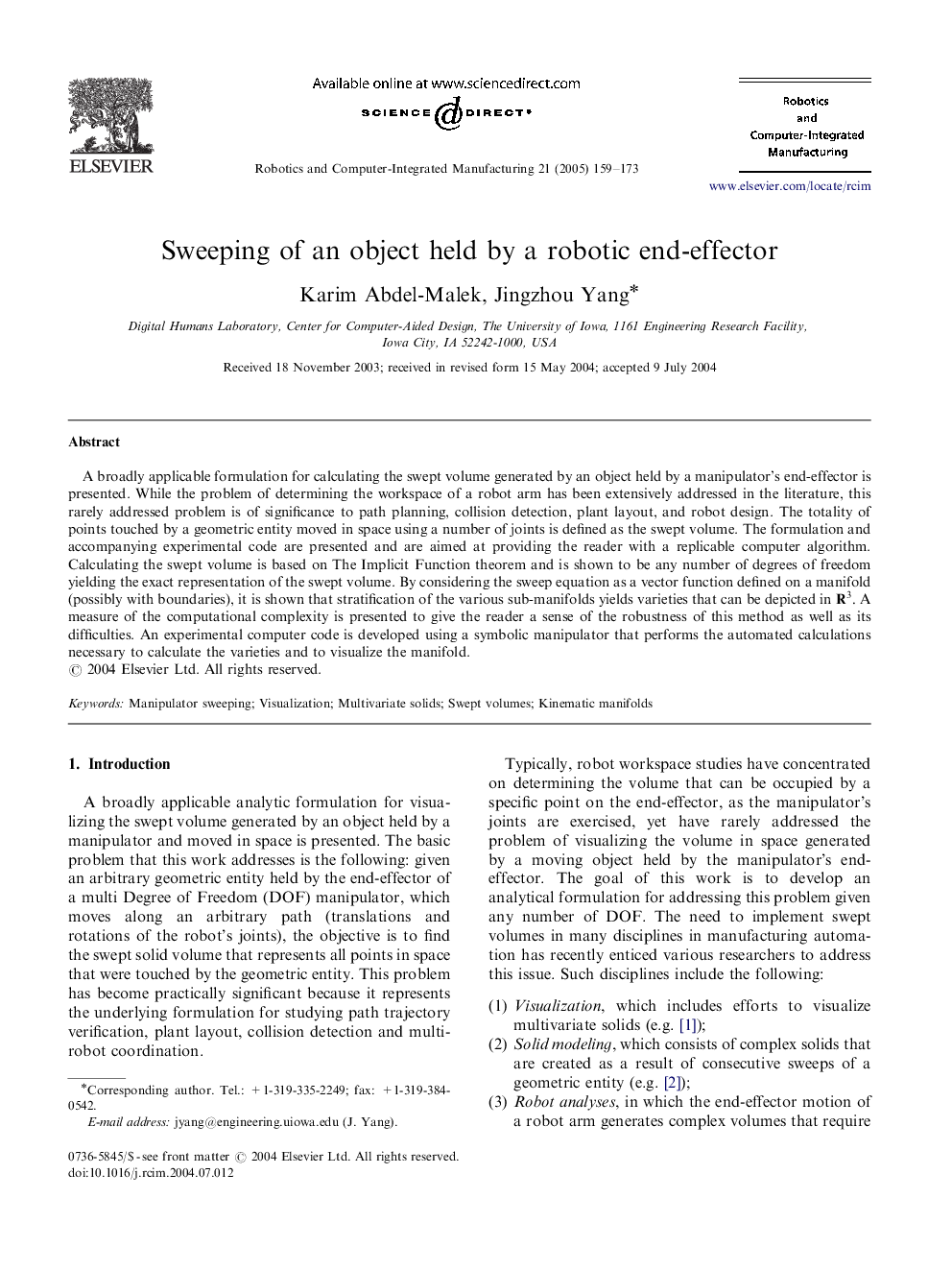| Article ID | Journal | Published Year | Pages | File Type |
|---|---|---|---|---|
| 10327188 | Robotics and Computer-Integrated Manufacturing | 2005 | 15 Pages |
Abstract
A broadly applicable formulation for calculating the swept volume generated by an object held by a manipulator's end-effector is presented. While the problem of determining the workspace of a robot arm has been extensively addressed in the literature, this rarely addressed problem is of significance to path planning, collision detection, plant layout, and robot design. The totality of points touched by a geometric entity moved in space using a number of joints is defined as the swept volume. The formulation and accompanying experimental code are presented and are aimed at providing the reader with a replicable computer algorithm. Calculating the swept volume is based on The Implicit Function theorem and is shown to be any number of degrees of freedom yielding the exact representation of the swept volume. By considering the sweep equation as a vector function defined on a manifold (possibly with boundaries), it is shown that stratification of the various sub-manifolds yields varieties that can be depicted in R3. A measure of the computational complexity is presented to give the reader a sense of the robustness of this method as well as its difficulties. An experimental computer code is developed using a symbolic manipulator that performs the automated calculations necessary to calculate the varieties and to visualize the manifold.
Keywords
Related Topics
Physical Sciences and Engineering
Computer Science
Artificial Intelligence
Authors
Karim Abdel-Malek, Jingzhou Yang,
